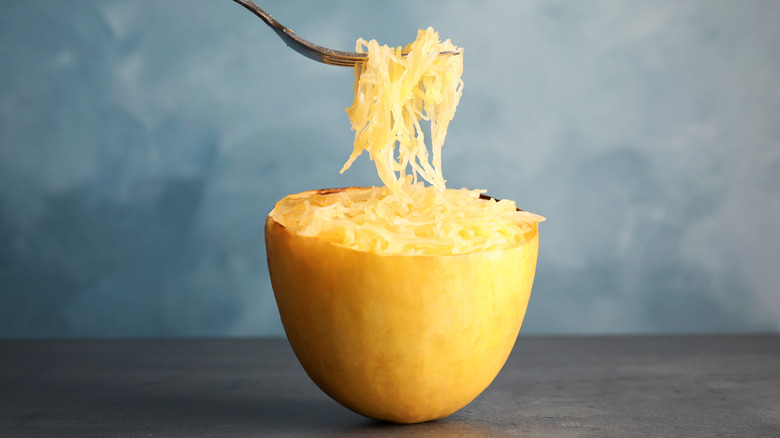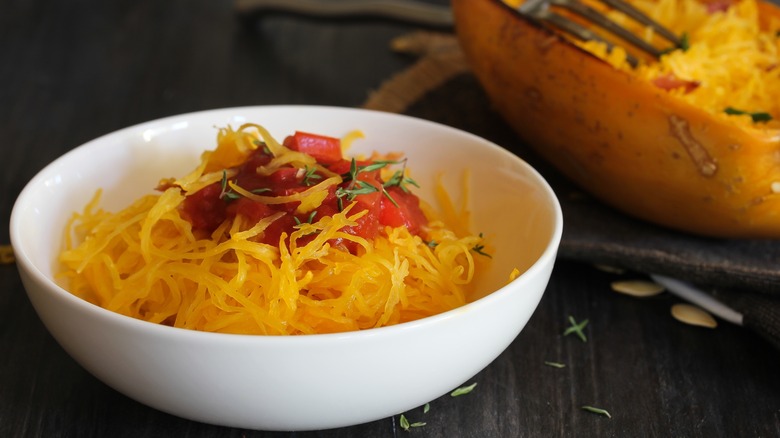The Slicing Secret To Get Way More Out Of Spaghetti Squash
While there are all kinds of ways to chop a vegetable, some kinds have inherent properties that change the way you should prep them. When cutting onions, for example, slicing from pole to pole will give you different textural results than slicing across the middle. Another such example is the humble spaghetti squash – a mild winter squash that, when broken open, reveals long, thin strands of edible goodness that are commonly treated like pasta. And with one easy trick, you can avoid having broken squash noodles and embrace long, twirlable beauties instead.
When cutting squash, chopping it in half lengthwise makes it easier to scoop out the seedy middle, but that method can ruin spaghetti squash. If you're looking for long strands, slice it across the middle, or the equator. The rest of the preparation will be the same, but this one change will result in elegant, restaurant-worthy squash strands. If you take a look at the inside of the squash, you'll understand why this works.
Cooking the squash will liberate its noodle-like interior, and a closer look at the strands reveals a circular pattern. The fibrous flesh wraps around the sides of the squash like a stack of rings connecting the two ends. Cutting it at the poles would cut those long, beautiful strands in half, too, leaving you with shorter pieces. Remember this the next time you're making squash pasta and you'll be able to twirl your squash around your fork with ease.
You've got the long noodles, now what?
Now that we've squashed the short strands, let's talk preparation. The delicate flesh is a delight to eat, but it needs to be cooked first. After scooping out the seeds, brush the flesh with oil and season it with salt and whatever spices you'd like. While there are many ways to cook spaghetti squash, cooking it in the microwave or roasting it in the oven are both great choices. But keep an eye on the texture, as overcooking will turn it from al dente to mush. When the squash has reached your preferred doneness, take a fork and carefully scrape (with the grain) the sides of the squash to release the much anticipated fleshy strands.
The bland nature of spaghetti squash makes it a wonderful companion to flavorful ingredients. Sift through the countless spaghetti squash recipes out there or take advantage of those long noodles with a pasta dish. Or, if you take into account the low-carb base, an "impasta" dish. The squash's neutral flavor pairs perfectly with punchy pasta sauces, while the shape and texture are reminiscent of spaghetti noodles.
As a nutritious replacement for wheat noodles, this winter squash is a great way to sneak some extra veggies into a meal. It's both low in calories and satisfying, and it's packed with tons of nutrients, like vitamins, fiber, and antioxidants (via Cleveland Clinic). Feed your body the good stuff while also enjoying the highlife of lengthier squash noodles.

